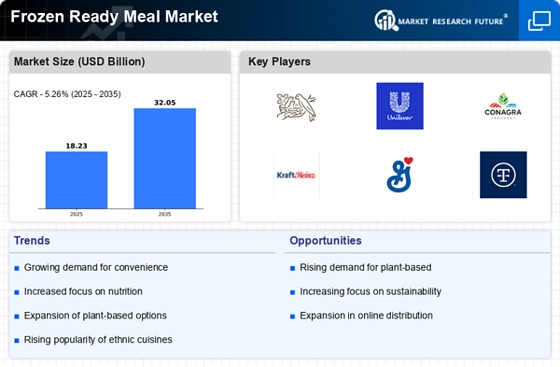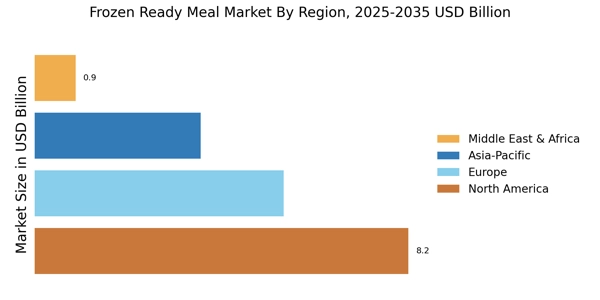Health and Wellness Trends
The Frozen Ready Meal Market is increasingly influenced by the rising health consciousness among consumers. There is a growing demand for meals that are not only convenient but also nutritious. Recent data suggests that approximately 40% of consumers are actively seeking healthier meal options, which has prompted manufacturers to innovate. This includes the introduction of meals that are low in calories, high in protein, and free from artificial preservatives. The industry is responding by expanding its product lines to include organic and gluten-free options, thereby catering to health-focused consumers. This shift towards health and wellness is likely to drive further growth in the Frozen Ready Meal Market.
Convenience and Time-Saving
The Frozen Ready Meal Market is experiencing a surge in demand due to the increasing need for convenience among consumers. Busy lifestyles and the growing number of dual-income households have led to a preference for quick meal solutions. In fact, a recent survey indicates that nearly 60% of consumers prioritize convenience when selecting meals. This trend is likely to continue as more individuals seek to balance work and personal life, making frozen ready meals an attractive option. The industry is adapting by offering a variety of meal types that cater to different dietary preferences, thus enhancing its appeal. As a result, the convenience factor is a significant driver of growth in the Frozen Ready Meal Market.
Evolving Consumer Preferences
The Frozen Ready Meal Market is significantly shaped by evolving consumer preferences, particularly among younger demographics. Millennials and Generation Z are increasingly favoring meals that offer unique flavors and diverse culinary experiences. This shift is prompting manufacturers to explore international cuisines and innovative flavor combinations, thereby expanding their product offerings. Recent market analysis indicates that meals inspired by Asian and Mediterranean cuisines are gaining popularity, reflecting a broader trend towards global flavors. As consumer preferences continue to evolve, the industry is likely to adapt, leading to increased competition and innovation within the Frozen Ready Meal Market.
Sustainability and Ethical Sourcing
Sustainability is becoming a pivotal driver in the Frozen Ready Meal Market, as consumers are increasingly concerned about the environmental impact of their food choices. There is a growing expectation for brands to adopt sustainable practices, including ethical sourcing of ingredients and eco-friendly packaging. Recent studies indicate that a significant portion of consumers, approximately 70%, are willing to pay a premium for products that align with their values regarding sustainability. This trend is prompting manufacturers to invest in sustainable practices, which not only enhances brand loyalty but also attracts environmentally conscious consumers. As sustainability becomes a core focus, it is likely to drive growth and innovation in the Frozen Ready Meal Market.
Technological Advancements in Food Preservation
Technological advancements play a crucial role in the Frozen Ready Meal Market, particularly in food preservation techniques. Innovations such as flash freezing and improved packaging methods have enhanced the quality and shelf life of frozen meals. These advancements not only help in retaining the nutritional value of the meals but also improve taste and texture, making them more appealing to consumers. As a result, the industry is witnessing a shift towards premium frozen meals that leverage these technologies. The ability to offer high-quality products is likely to attract a broader consumer base, thereby driving growth in the Frozen Ready Meal Market.


















Leave a Comment